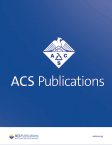Abstract PO5-05-09: Testing AI-Predicted Protein Motifs that Direct Constitutive Genomic AR Activity in Endocrine Resistant Breast Cancer
IF 3.4
Q2 PUBLIC, ENVIRONMENTAL & OCCUPATIONAL HEALTH
引用次数: 0
Abstract
Testing AI-Predicted Protein Motifs that Direct Constitutive Genomic AR Activity in Endocrine-Resistant Breast Cancer Ashfia F. Khan 1,2, Anthony S. Peidl 1,2, Shaymaa Bahnassy 3, Henry Vo2, Micah B. Castillo 2, Sarah K Herzog4,5, Suzanne AW Fuqua4,6, Preethi Gunaratne 2, Xiaolian Gao 2, Subash C. Pakhrin7, Tasneem Bawa-Khalfe1,2 1 Center for Nuclear Receptors & Cell Signaling, University of Houston, Houston, TX 2 Department of Biology & Biochemistry, University of Houston, Houston, TX 3 Department of Oncology, Lombardi Comprehensive Cancer Center, Georgetown University, Washington, DC 4 Lester & Sue Smith Breast Center, Baylor College of Medicine, Houston, TX 5 Program in Integrative Molecular and Biomedical Sciences, Baylor College of Medicine, Houston, TX 6 Dan L Duncan Comprehensive Cancer Center, Baylor College of Medicine, Houston, TX 7 Department of Computer Science & Engineering Technology, University of Houston-Downtown, Houston, TX Background: Endocrine therapy (ET) remains the first-line treatment for hormone-receptor positive (HR+) breast cancer (BCa). Approximately 15–20% of HR+ BCa are intrinsically resistant to ET, and 30–40% of patients acquire resistance. Resistance to ET (ET-R) supports cancer progression with reduced disease-free survival and greater incidence of metastatic disease. Hence, therapeutic strategies for ET-R HR+ BCa remain an overarching challenge. The androgen receptor (AR) is emerging as an attractive alternative target for BCa subtypes, and elevated AR levels drive HR+ BCa progression. Targeting AR in HR+ BCa is proving difficult with preclinical studies showing conflicting results for AR antagonists. Yet clinical trials with several AR-targeting drugs are ongoing. Our recent report highlights a unique constitutively active modified AR population that drives HR+ BCa metastatic properties and is insensitive to AR inhibitors. Our current objectives are to 1) use a novel machine-learning model to predict AR modifications and 2) establish a strategy to identify patients with high modified AR levels. Methods: An advanced artificial intelligence (AI) tool and mid-throughput microfluidic peptide array technology were used to map modification domains on AR. SUMO post-translational modification of AR (SUMO-AR) was eliminated in HR+ BCa using CRISPR-Cas9 technology. RNA-seq was employed to identify a unique gene signature for SUMO-AR, and comparative bioinformatic analysis stratified patients with high versus low SUMO-AR. Results: A novel deep-learning AI platform SumoPred-PLM is trained to identify consensus, non-consensus, and SUMO2/3-specific motifs on AR. We verified SUMO2/3-specific sites on AR with a mid-throughput microfluidic peptide array. The identified SUMO2/3-acceptor site of AR is important for HR+ BCa cell pathophysiology; loss of this SUMO2/3-acceptor site impacts endogenous AR SUMOylation, cell morphology, and proliferation/apoptosis. Using both high and low SUMO-AR BCa lines, a unique SUMO-AR gene profile was established. Our SUMO-AR gene signature identifies HR+ BCa patients with greater susceptibility to metastatic progression. Conclusion: Our studies present a unique pipeline that incorporates deep-learning AI technology to identify vulnerable motifs in AR for future drug discovery. Drug screens are currently ongoing. In addition, we establish a SUMO-AR gene signature that stratifies HR+ BCa patients with high/low SUMO-AR and predicts disease progression. We expect the results could be utilized to identify responders to AR inhibitors in ongoing clinical trials. Citation Format: Ashfia Khan, Anthony Peidl, Shaymaa Bahnassy, Henry Vo, Micah Castillo, Sarah Herzog, Suzanne Fuqua, Preethi Gunaratne, Xiaolian Gao, Subash Pakhrin, Tasneem Bawa-Khalfe. Testing AI-Predicted Protein Motifs that Direct Constitutive Genomic AR Activity in Endocrine Resistant Breast Cancer [abstract]. In: Proceedings of the 2023 San Antonio Breast Cancer Symposium; 2023 Dec 5-9; San Antonio, TX. Philadelphia (PA): AACR; Cancer Res 2024;84(9 Suppl):Abstract nr PO5-05-09.摘要 PO5-05-09:测试人工智能预测的引导内分泌耐药乳腺癌基因组AR活性的蛋白质基元
测试 AI 预测的引导内分泌耐受性乳腺癌基因组 AR 活性的蛋白质基元 Ashfia F. Khan 1,2, Anthony S. Peidl 1,2, Shaymaa Bahnassy 3, Henry Vo2, Micah B. Castillo 2, Sarah K Herzog4,5, Suzanne AW Fuqua4,6, Preethi Gunaratne 2, Xiaolian Gao 2, Subash C. Pakhrin7, Tasneem Bawa-Khalfe1,2 1 休斯顿大学核受体与细胞信号中心 2 休斯顿大学生物与生物化学系 3.Pakhrin7, Tasneem Bawa-Khalfe1,2 1 德克萨斯州休斯顿休斯顿大学核受体与细胞信号中心 2 德克萨斯州休斯顿休斯顿大学生物与生物化学系 3 华盛顿特区乔治敦大学隆巴迪综合癌症中心肿瘤学系 4 莱斯特与苏-史密斯乳腺中心、德克萨斯州休斯顿贝勒医学院 5 德克萨斯州休斯顿贝勒医学院分子与生物医学综合科学项目 6 德克萨斯州休斯顿贝勒医学院 Dan L Duncan 综合癌症中心 7 德克萨斯州休斯顿市中心大学计算机科学与工程技术系 背景:内分泌治疗(ET)仍然是激素受体阳性(HR+)乳腺癌(BCa)的一线治疗方法。大约 15-20% 的 HR+ BCa 对 ET 有内在耐药性,30-40% 的患者会产生耐药性。对 ET 的耐药性(ET-R)会导致癌症进展,降低无病生存率,增加转移性疾病的发病率。因此,ET-R HR+ BCa 的治疗策略仍是一项重大挑战。雄激素受体(AR)正在成为BCa亚型的一个有吸引力的替代靶点,AR水平的升高推动了HR+ BCa的进展。临床前研究显示,AR拮抗剂的治疗结果相互矛盾,因此很难在HR+ BCa中靶向AR。然而,几种AR靶向药物的临床试验正在进行中。我们最近的报告强调了一种独特的组成型活性修饰AR群体,它具有驱动HR+ BCa转移的特性,并且对AR抑制剂不敏感。我们目前的目标是:1)使用新型机器学习模型来预测AR修饰;2)建立一种策略来识别高修饰AR水平的患者。方法:使用先进的人工智能(AI)工具和中通量微流控肽阵列技术绘制AR上的修饰域。利用CRISPR-Cas9技术消除HR+ BCa中AR的SUMO翻译后修饰(SUMO-AR)。利用RNA-seq技术确定了SUMO-AR的独特基因特征,并通过生物信息学比较分析对高SUMO-AR和低SUMO-AR患者进行了分层。研究结果一个新颖的深度学习人工智能平台SumoPred-PLM经过训练可识别AR上的共识、非共识和SUMO2/3特异性图案。我们利用中通量微流控肽阵列验证了AR上的SUMO2/3特异性位点。已确定的AR SUMO2/3受体位点对HR+ BCa细胞的病理生理学非常重要;该SUMO2/3受体位点的缺失会影响内源性AR SUMOylation、细胞形态和增殖/凋亡。利用高SUMO-AR和低SUMO-AR BCa品系,建立了独特的SUMO-AR基因谱。我们的 SUMO-AR 基因特征可识别出更易发生转移的 HR+ BCa 患者。结论我们的研究提出了一种独特的方法,该方法结合了深度学习人工智能技术,可识别AR中的易感基因,用于未来的药物发现。目前正在进行药物筛选。此外,我们还建立了一个 SUMO-AR 基因特征,可将高/低 SUMO-AR 的 HR+ BCa 患者分层,并预测疾病进展。我们希望这些结果能在目前的临床试验中用于识别AR抑制剂的应答者。引用格式:Ashfia Khan, Anthony Peidl, Shaymaa Bahnassy, Henry Vo, Micah Castillo, Sarah Herzog, Suzanne Fuqua, Preethi Gunaratne, Xiaolian Gao, Subash Pakhrin, Tasneem Bawa-Khalfe.测试人工智能预测的引导内分泌耐药乳腺癌基因组AR活性的蛋白质结构[摘要]。In:2023 年圣安东尼奥乳腺癌研讨会论文集;2023 年 12 月 5-9 日;德克萨斯州圣安东尼奥。费城(宾夕法尼亚州):AACR; Cancer Res 2024;84(9 Suppl):Abstract nr PO5-05-09.
本文章由计算机程序翻译,如有差异,请以英文原文为准。
求助全文
约1分钟内获得全文
求助全文
来源期刊

ACS Chemical Health & Safety
PUBLIC, ENVIRONMENTAL & OCCUPATIONAL HEALTH-
CiteScore
3.10
自引率
20.00%
发文量
63
期刊介绍:
The Journal of Chemical Health and Safety focuses on news, information, and ideas relating to issues and advances in chemical health and safety. The Journal of Chemical Health and Safety covers up-to-the minute, in-depth views of safety issues ranging from OSHA and EPA regulations to the safe handling of hazardous waste, from the latest innovations in effective chemical hygiene practices to the courts'' most recent rulings on safety-related lawsuits. The Journal of Chemical Health and Safety presents real-world information that health, safety and environmental professionals and others responsible for the safety of their workplaces can put to use right away, identifying potential and developing safety concerns before they do real harm.
 求助内容:
求助内容: 应助结果提醒方式:
应助结果提醒方式:


